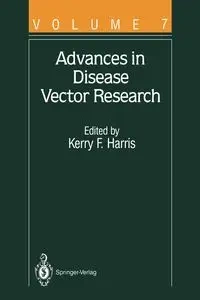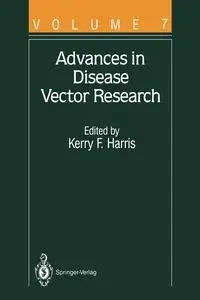Advances in Disease Vector Research - Andrews Christopher J.
Advances in Disease Vector Research - Andrews Christopher J.
EAN: 9781461390466
Marka
Symbol
043HKH03527KS
Rok wydania
2011
Strony
236
Oprawa
Miekka
Format
15.6x23.4cm
Redakcja
Andrews Christopher J.
Język
angielski

Bez ryzyka
14 dni na łatwy zwrot

Szeroki asortyment
ponad milion pozycji

Niskie ceny i rabaty
nawet do 50% każdego dnia
Niepotwierdzona zakupem
Ocena: /5
Marka
Symbol
043HKH03527KS
Kod producenta
9781461390466
Rok wydania
2011
Strony
236
Oprawa
Miekka
Format
15.6x23.4cm
Redakcja
Andrews Christopher J.
Język
angielski

We open Volume 7 with a series of four chapters on plant virus transmission by insects. In Chapter 1, Karen Gibb and John Randles present preliminary information about an association between the plant bug Cyrtopeitis
nicotianae (Heteroptera: Miridae) and velvet tobacco mottle virus (VTMo V): the only reported instance of mirid transmission of a known virus. Mirids could be considered as likely vectors of plant viruses because they are
phytophagous, possess a piercing-sucking-feeding apparatus, have winged adults, and are cosmopolitan pests of a wide range of crops. Surprisingly, however, there are only three plant viruses purportedly transmitted by
heteropterous vectors, compared with the nearly 250 by homopterous ones. To what extent these figures reflect actual differences in the abilities of members of the two suborders to transmit plant pathogens remains to be
determined. Compared with the Homop tera, the Heteroptera have been ignored by researchers as potential vectors of plant viruses. The authors are quick to point out that additional studies are needed before generalizations
can be made about virus-mirid-plant interactions and that virus transmission by mirids is not easily characterized using the conventional transmission criteria and terminology established for such homopterous vectors as aphids
and leafhoppers. Transmission of VTMoV by C. nicotianae appears to have characteristics in common with both nonpersistent noncirculative and circulative (persistent) transmission.
EAN: 9781461390466
EAN: 9781461390466
Niepotwierdzona zakupem
Ocena: /5
Zapytaj o produkt
Niepotwierdzona zakupem
Ocena: /5
Napisz swoją opinię

